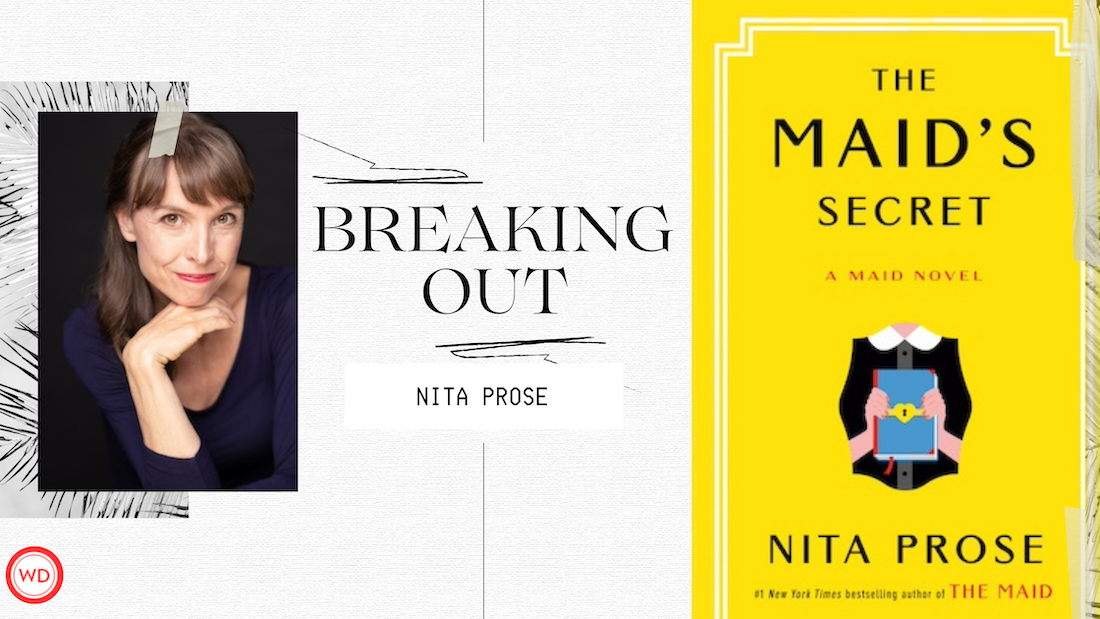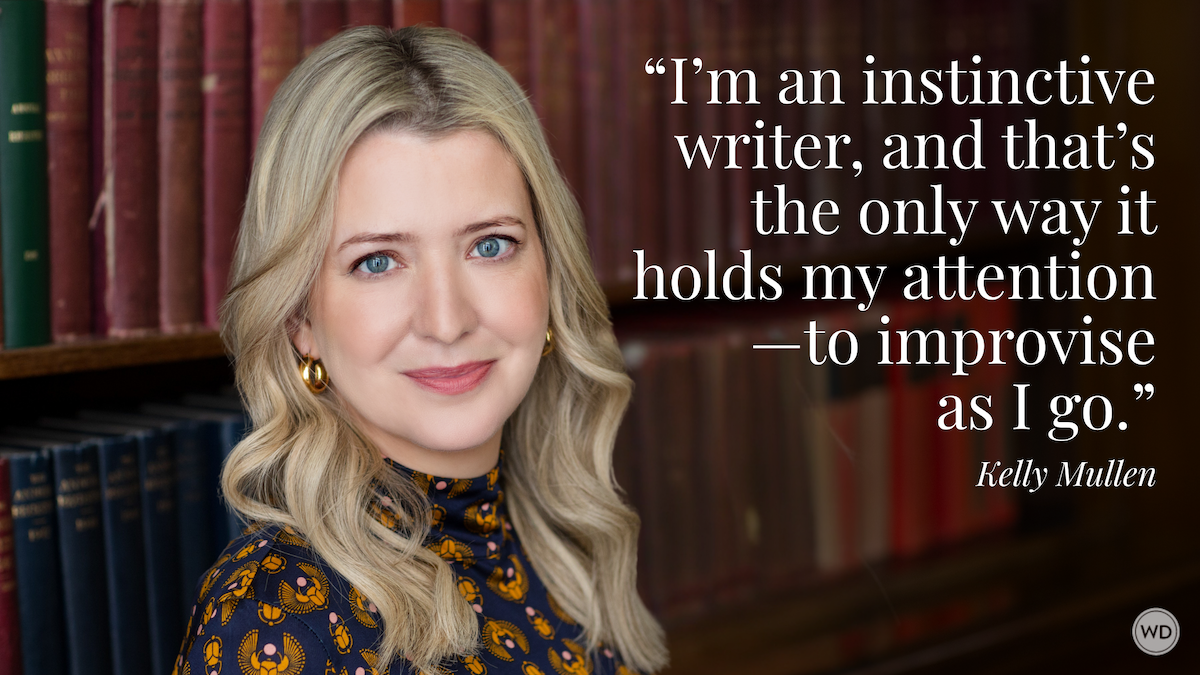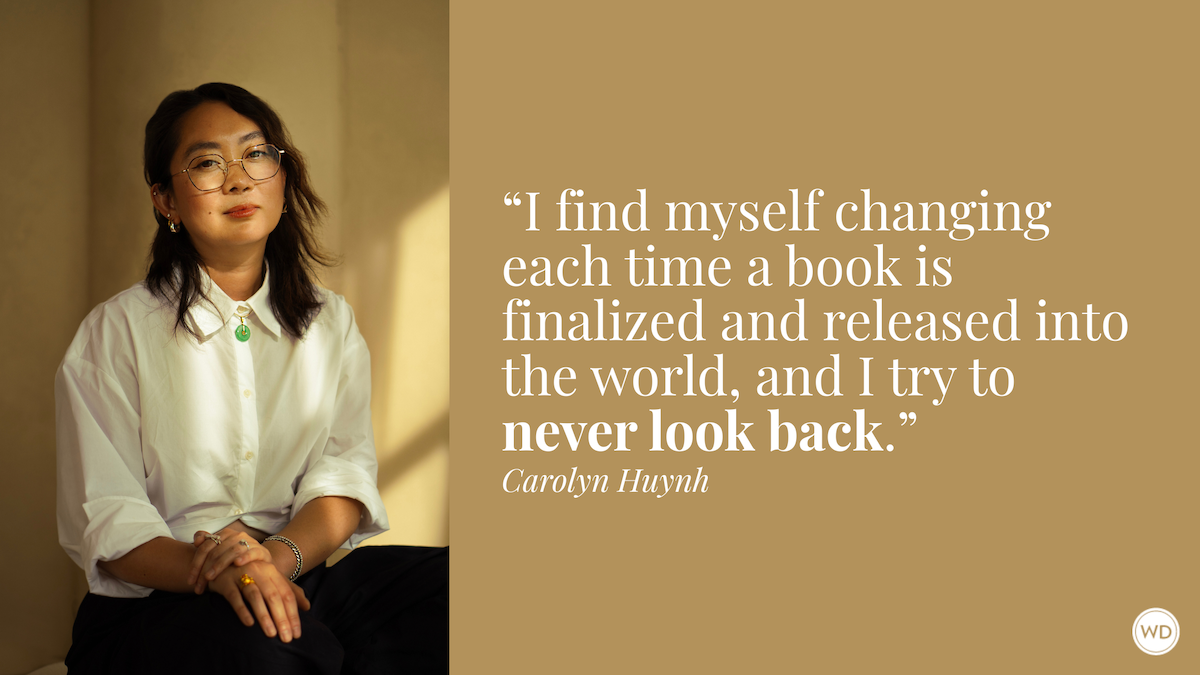Opening Scenes: An Overview
Read Chapter 2, Opening Scenes: An Overview from Hooked
The opening of a short story or novel is just that—the very beginning. That’s the simple and straightforward definition. However, what this book is really concerned with is illustrating the differences between good and bad openings—although perhaps it may be best not to assign words like good and bad to openings. Instead we’re going to be talking about and describing openings that work and openings that don’t work.
THE COMPONENTS OF AN OPENING SCENE
An opening scene has ten core components: (1) the inciting incident; (2) the story-worthy problem; (3) the initial surface problem; (4) the setup; (5) backstory; (6) a stellar opening sentence; (7) language; (8) character; (9) setting; and (10) foreshadowing. Let’s take a quick look at each and how they work together to help the opening scene achieve its unique goals. This is only an overview, as these elements are discussed in greater detail in later chapters.
The Primary Components
Each of the ten components is important, but some are more important than others. The four most important, in almost all stories, are the inciting incident, the story-worthy problem that is introduced by the inciting incident, the initial surface problem that is directly created as a result of the inciting incident, and the setup. The importance of the last six ingredients varies according to the individual story, but even though important, they usually take a back seat to the first four.
1. The Inciting Incident
As noted in the previous chapter, the inciting incident is the event that creates the character’s initial surface problem and introduces the first inklings of the story-worthy problem. In essence, this is the “action” part of the story, the part that is plot-based. This happens to the protagonist, then he does this to resolve it, then this, and so on.
2. The Story-Worthy Problem
The inciting incident sets the stage for the story-worthy problem, which functions just beneath the surface of the story on a more psychological level. Consider it the driving force behind the initial surface problem as it’s ultimately what the protagonist must reconcile at the end of the story. The inciting incident introduces this problem by either bringing to the forefront a buried problem or creating a new one, thus beginning the gradual revealing process that will encompass the rest of the story as the protagonist’s—and the reader’s—understanding of the true nature of story-worthy problem deepens.
3. The Initial Surface Problem
This is the problem that occurs as a direct result of the inciting incident. And while it may seem at first glance that solving this problem is what the story is really all about, it’s not. As we just discussed in the previous section, every story is ultimately about solving the deeper, more complicated story-worthy problem that is slowly revealed as the story progresses. So why does the initial surface problem qualify as a primary opening scene component? Simple. It propels the protagonist to take action (he wants to solve it, or at least he better for your story to work), and assists in the eventual revelation of the story-worthy problem.
Keep in mind that the initial surface problem can evolve into or create additional, even larger surface problems, but that these must rise organically from the initial problem and always be firmly moored to the story-worthy problem.
4. The Setup
The definition of the setup is just that—it “sets up” the opening scene by giving a snapshot that allows what will take place in the following scene to be clear to the reader. The last thing you want to happen is to force the reader to “backtrack” to make sense of what’s taking place in the scene. That’s why opening directly with dialogue is usually a mistake. Unless the dialogue is crystal clear as to who’s talking to whom and about what, the reader may have to go back and reread the dialogue again once she figures out the context and who the participants are and their relationship to each other. At the least, such backtracking—either literally or on a subconscious level—represents a speed bump. At the worst, it can create a complete stall for the fictive dream. There are, of course, exceptions, but it’s usually safest to not take chances and to avoid beginning with direct dialogue.
Setup can take any number of forms or combinations of forms. The overall “rule” is to only give what’s absolutely necessary for the reader to understand the scene that will follow and no more. Remember, this is the beginning and the beginning is the place the reader will decide whether to invest any more time in the story. That means little or no backstory—save that for later. (That’s why I’ve listed backstory as a secondary component instead of primary component despite that fact at least a small amount usually appears in opening scenes—to remind you to use it with care.) You also shouldn’t include excessive detail or description in your setup. Save it. Your setup should contain at least a hint of the trouble to come, either directly or indirectly. It may be something as simple as showing the reader a man and a woman seated across from each other in a restaurant and the man refusing to meet the woman’s eyes as she begins talking. At the other extreme, it may need to show that the restaurant is an abandoned, dust-covered dining room in a Western ghost town and it has recently been designated as an atomic bomb test site. In any case, only provide the bare minimum that will serve the scene that follows and orient the reader sufficiently that what ensues is clear as it begins to take place.
The Secondary Components
Now that we’ve defined the inciting incident, the story-worthy problem, the initial surface problem, and the setup, all of which make up the foundation of an opening scene, let’s look at the secondary components of backstory, a stellar opening sentence, language, character, setting, and foreshadowing. I say secondary because, while the first four ingredients are absolutely crucial to any beginning, these last six take on varying degrees of importance depending on the story and your aims, and some of these latter components may not even appear in some openings.
5. Backstory
This is usually where new writers err the most when it comes to their opening scenes. Backstory includes anything and everything that’s happened up to the time of the inciting incident. There are times when a bit of backstory is necessary for the reader to grasp what’s going on in the inciting incident and why it’s important. However, this is the greatest bane for most editors and agents when they encounter a newly submitted manuscript and is the biggest kiss of death for the work. Tread carefully when considering how much backstory to include in your story.
Are there times when a longer backstory is necessary? Actually, there are. In many police procedurals, mysteries, thrillers and related genres, the story begins often with a crime being committed. The protagonist is nowhere around the scene at the book’s beginning. Many of best-selling novelist John Sandford’s novels are classic examples. They begin with the crime being committed and it’s only later that the protagonist enters the story.
There are other exceptions, such as in Larry Watson’s Montana 1948, which we’ll look at in chapter four.
The danger in telling you that backstory can sometimes be lengthy, is that you may take that as license to provide too much backstory. The single biggest fault of most writers is that they simply don’t trust the reader’s intelligence to “get” what’s going on without providing lengthy backstory. Editors, agents, and writing teachers constantly fight that impulse in writers. Many writers feel the reader has to know that Mary has been married three times, each relationship ending badly, to “understand” why she’s looking for a good relationship. Providing that kind of backstory will most likely lead to rejection and is the kind of backstory that, while indeed important, needs to be doled out at a later point in thestory and bit by bit.
In general, keep backstory either absent from the opening or only include as much as is absolutely necessary to set the scene for the inciting incident. We’ll discuss backstory in greater detail in chapter four.
6. The Opening Line
Spend an awful lot of time on this sentence. In fact, more effort should be expended on your story’s first sentence than on any other line in your entire story. No kidding. The first sentence is the first thing the readers will see when they open the door of your manuscript or story. Make sure it’s a good ’un! One that will create a strong impression. My own favorite is one I used in my short story “The Bad Part of Town,” which begins: He was so mean that wherever he was standing became the bad part of town.
I know it’s my own story and one should at least appear to be somewhat humble, but honestly, do you think most readers would be able to resist reading on after reading that sentence?
7. Language
The opening is where you should create your most memorable language. The first sentence is often the best sentence of all in many successful stories. Take time to craft not only the first sentence, but the rest of the opening. Refrain from using adverbs and too many adjectives, especially ordinary ones. For gosh sakes, don’t pair adjectives in an attempt to make the description more powerful. The rule of thumb with adjectives is that with each additional one, the power is halved, not doubled, as many mistakenly think. The secret to good writing is to employ strong, original verbs (avoid forms of to be), and concrete nouns. Avoid “invisible” words like beautiful or redundant phrasing like ran quickly. Especially avoid using adverbial qualifiers for dialogue tags; instead, stick to said for almost all of your tags.
8. Character Introduction
The opening is where you at least introduce your protagonist and usually the antagonist. This doesn’t mean you give a life history for either of these principle characters. Introduce your reader to your characters by showing the characters’ reactions to the inciting incident. Those reactions reveal and define their personalities, creating a first impression as strong as any in our own lives.
Brevity is key here. Instead of long, boring physical descriptions and little tangential stories that you think will illuminate your character’s personality, pick a telling detail and let the reader fill in the rest. Characters are best revealed by their actions instead of exposition anyway, and you have a whole, entire book or story for exposition. For instance, if you feel it important to develop your protagonist’s characterization as a skinflint, don’t give some long, drawn-out tale of him pinching pennies as a youngster, or (worse!) tell the reader he’s a miserable miser. Instead, in your opening scene, show him doing something miserly within the context of the inciting incident scene. Show him having to transfer two handfuls of hundred-dollar bills to one hand so he can scoop the inside of the coin return of a candy machine for forgotten nickels. Remember, you don’t have to develop the whole of his characterization in the opening—just the single most important facet—and you should do that briefly and with a telling action.
Also be careful not to introduce too many characters at once. Give your reader time to get to know the main character(s) before flooding the page with many others. A host of people parading about on the stage when the story has scarcely begun will confuse the reader, who will be trying to keep track of all these folks. If there are very many characters in the beginning, your reader may well throw up her hands at trying to figure out who all these people are and how they may impact the story.
9. Setting
At least a glimpse of the setting should be included in the opening. It’s important to be grounded physically. The amount of detail you provide should depend on how important the setting will prove to be. Writers like Ellen Gilchrist and Raymond Chandler made their story settings almost a character in their stories, and so included greater detail than did the minimalist Raymond Carver, who was much more interested in character. The setting includes many things—the physical space from the doily on the end table to the Milky Way and beyond. The time period is part of the setting. The culture and society the characters find themselves in is also a part. Anything that can be seen, heard, or imagined is an element of the setting. Be careful that you only include details that are important. To paraphrase Chekhov, if a gun appears on the credenza in act one, it needs to be fired by act three. All that means is that every detail in the setting has to serve a purpose. The reader will expect whatever is being described or noted about the setting to play a prominent part somewhere in the tale.
Keep in mind that setting is one of the ingredients that may or may not be that important, and it is hardly ever as important as many writers believe it to be. Sometimes writers spend far too much space on creating the setting because, well, settings are easy to write. Half the time you’ve spent in English and writing classes has probably been devoted to writing settings. You become good at them. The problem is, when you have a strength, it’s tempting to go to it again and again, instead of tackling the tough part of writing, which is writing scenes. Also, description has changed a lot from the days you learned how to write description in school. Today, passive description is largely eschewed, and almost all description in a contemporary story is active description, incorporated unobtrusively within the action of a scene, so the bit of description doesn’t stop the scene or even slow it down noticeably.
In yesteryear, you may have been praised by your teachers for long paragraphs of near-poetic descriptions, using clever similes and metaphors and laying on the language of dead poets. But today’s description is short and sweet, and doesn’t interfere with the action and drama of the scene. Instead of describing a highway’s “thin, white hypnotic lines” or “bumper-to-bumper traffic with little kids and dogs hanging out of windows” and the like, today we would simply write something like Tim Dorsey did in his hysterically funny novel Torpedo Juice: “His headlights bounced off a panther crossing sign.”
However, there are times and stories that do call for more extensive settings—specifically, stories in which the setting becomes a character itself. Many of Ellen Gilchrist’s stories depend on the city of New Orleans playing a character’s role. Faulkner’s fictional Yoknapatawpha County setting is as much a character in several of his novels as any flesh-and-blood person. That duly noted, Faulkner still didn’t open his stories with detailed descriptions of place, but rather waited until a bit later to deliver lengthy descriptions.
For most stories and novels, a brief description of setting is useful and even necessary to ground the reader, but I urge you to save lengthy descriptions for later on. A brief description of setting is important, and it is important that it be brief.
10. Foreshadowing
Foreshadowing is hinting at the action or obstacles to come. Hints about upcoming perils create page-turning reads, but foreshadowing may or may not be important in your opening. For certain types of novels—mysteries and thrillers, for instance—foreshadowing may be very important. For other genres it may not even be necessary. Let’s say you have a character who will save the day at the end by leaping over a tremendous chasm. You may want to foreshadow that in the very beginning by mentioning that he won the bronze medal in the long jump in the 1984 Olympics. Even though that initial mention may occur on page 1, and he doesn’t actually make the big hop until page 387, the reader will remember and the jump won’t seem ludicrous when he actually makes it. It will have been effectively foreshadowed.
These are the major components or elements a good opening scene should include, and we’ll be discussing them again and again throughout the book. Only you can determine which of the ten components need to be included in your story, and to what length. Think of the top four components as first tier, and the last six as second tier.
These ten components are a lot to have going on in a relatively short space, so it’s key that you write tight. The opening scene should be relatively short—a good working length would be one to four pages—so it’s important to be concise and make the language work in more than one way. (We’ll take a closer look at length in chapter ten.)
Find out more about Hooked!
Les Edgerton is the author of Hard Times (Bronzeville Books; December 8, 2020), as well as more than 20 additional books, including Hooked: Write Fiction That Grabs Readers at Page One & Never Lets Them Go (Writer’s Digest Books; 2007) and numerous short stories and screenplays. His work has been nominated for or awarded the Pushcart Prize, O. Henry Award, PEN/Faulkner Award, Derringer Award, Spinetingler Magazine Thriller of the Year, Jesse Jones Book Award, Edgar Allan Poe Award, Violet Crown Book Award, the Nicholl Foundation Script-Writing Awards, and the Best of Austin and Writer’s Guild screenwriting awards.








